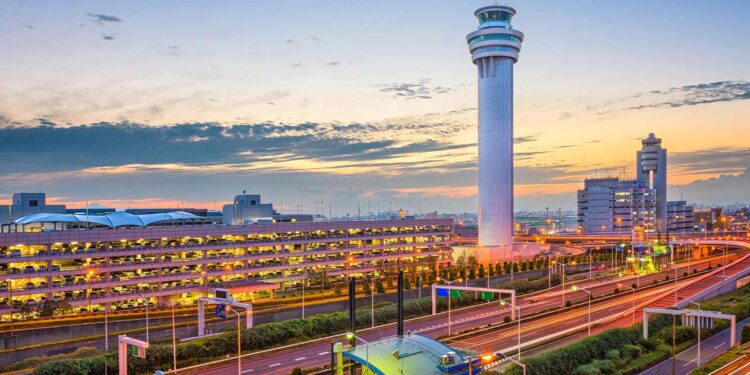Operating to Japan – Part 1: Airports & Parking

This is a post by author Hiroshi Higashiyama. Hiroshi is representative director for Universal Aviation Japan, which has aircraft ground handling facilities in Haneda, Narita, Sapporo, and Osaka. Hiroshi is an expert on business aircraft operations in Japan and can be contacted at hiroshihigashiyama@universalaviation.aero.
This business aviation blog post is part of a three-part article series on business operations to Japan.
Japan is, and always has been, a popular tech and destination stop location for general aviation (GA). While GA access, particularly to the Tokyo area, is much improved over what it was 15 years ago, there are still issues to consider in terms of airport hours, overtime options, parking availability and maximizing success of the ground handling experience.
The following is an overview of what you need to know:
1. GA traffic to Japan
GA traffic to Japan remains steady from North America and Europe but is up significantly from China. While Tokyo and Osaka area airports remain the most popular destinations, growing GA tourism from China, particularly to the northern island of Hokkaido for spring cherry blossom and winter ski/snow seasons is also evident.
2. Tokyo area airports
GA operations to Tokyo split roughly 50/50 between Haneda (RJTT) and Narita (RJAA). Although most operators prefer to go to RJTT, it’s usually more difficult to obtain airport slots and longer term parking here. Additionally, RJTT is a more expensive operating environment than RJAA.
3. Other popular AOEs
Outside of Tokyo popular airports of entry (AOEs) include Sapporo (RJCC), Nagoya (RJGG), Osaka (RJBB), Kitakyushu (RJFR), Kagoshima (RJFK) and Naha (ROAH). Full GA support services are available at all of these locations but airport and customs, immigration and quarantine (CIQ) clearance hours should always be confirmed in advance.
4. Non AOEs used by GA
Nagoya (RJNA) and Kobe (RJBE) are not normally AOEs but CIQ clearance can be requested with prior notice. Both locations have airport operating hours 0700-2200 local. RJBE has a full service fixed-base operator (FBO) while GA support at RJNA is provided out of the main terminal. Some locations may require extended notice for CIQ arrangements. For example, RJBE mandates 14 business days advance notification in order to have CIQ available.
5. Parking considerations
Most Japanese airports limit length of stay for GA parking. Some airports do not accept overnight GA parking while others allow longer term parking. RJTT formerly permitted up to 10 consecutive days parking but has been reduced this to a maximum of five days. RJAA allows up to 30 days GA parking. Be mindful that RJTT often has no overnight GA parking availability, due to limited parking spots, and GA overnight parking at Sapporo (RJCC) is never available during the winter season.
6. Tech stops
For international tech stops we recommend RJBB, RJCC and RJGG. For quickest possible turns, with minimum ground time, all requested services – such as lav, water, trash, in-flight catering — should be pre-ordered at least two hours prior to arrival. Operational delays may be experienced when tech stop requests are made last minute.
7. Weather considerations
Typhoon season generally runs June through July in the south of Japan and September through October in the north. During major typhoon events airports may close down operations for up to a full day. Fog can be an issue at RJAA, particularly during mornings, but does not generally impact other airports. At times, runways at RJAA may close for up to an hour or two due to severe fog. From time to time thunderstorm activity and heavy rains also disrupt airport ops across Japan.
8. Additional reading: Operating to Japan – Series Index
Note: Links will be updated as articles are published.
- Part 1 – airports and aircraft parking
- Part 2 – permits, airport slots, customs, and immigration
- Part 3 – ground handling, security, and local services
Conclusion
Many operators travel to Japan for business, but we are seeing an increase of tourism, especially for certain countries. Full services can be provided for your destination, but CIQ hours may be limited or prior request is needed to make it an AOE for first entry into the country. Additionally, there are limitations to consider for aircraft parking depending on your destination.
Stay tuned for Part 2, which covers permits, airport slots, customs, and immigration when operating to Japan.




